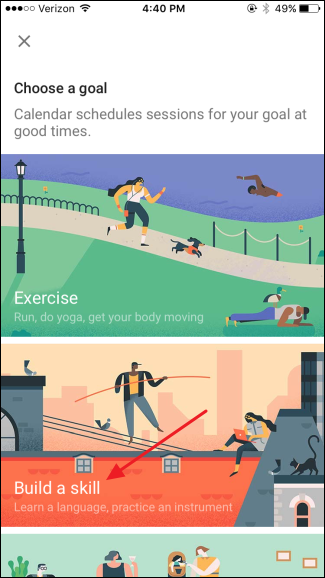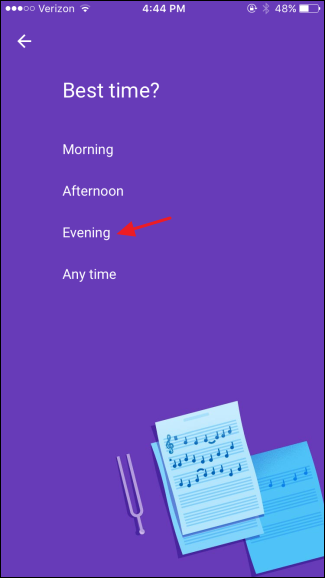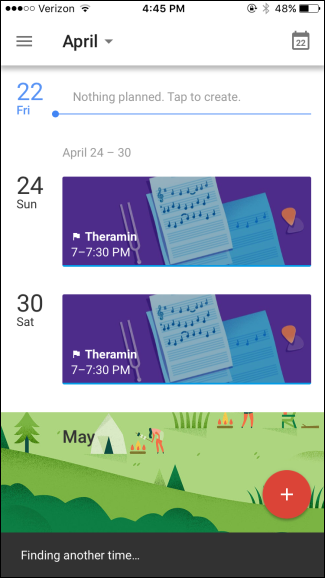
Earlier this month, Google added a Goals feature to the Google Calendar apps for iOS and Android. Goals automatically finds free time in your calendar and schedules recurring events to help you achieve your goals. Here’s how to get it all set up.
The Google Calendar app is installed by default on Android. If you use an iPad or iPhone, you can add your Gmail, contacts, and calendar to the built-in iOS apps, but you’re probably better served downloading the official Google Calendar app for its extra features, like reminders–and now, goals. The new goals feature is great if you want to schedule regular blocks of time for achieving your goals because Google Calendar automatically finds free time in your calendar based on criteria you set. And if you add a conflicting event to your calendar, Google will automatically defer your goal to a later date. Here’s how to set up a goal.
 How to Add Your Gmail, Contacts, and Google Calendar to Your iPhone or iPad
How to Add Your Gmail, Contacts, and Google Calendar to Your iPhone or iPad How to Use the Reminders Feature in Google Calendar
How to Use the Reminders Feature in Google Calendar
In the Google Calendar app, tap the Create button at the bottom right.

On the pop-up menu, tap Goal.

Next, you’ll choose the type of goal you want to create. Options right now include exercising, building a skill, making time for friends and family, getting some me time, or organizing your life. In this example, we’re going to set up a goal for learning to play a musical instrument, but the steps are the same for whatever goal you choose. Tap “Build a skill.”

On the next page, choose from a list of skills that match the category or tap “Custom…” to create your own. Here, we’re going to tap “Practice an instrument.”

If you pick a built-in skill, Google Calendar will have some suggestions for you to narrow down your goal. You can also type in your own skill name, which we’re doing in this example.

Next, choose how often you want to work on your goal. This choice determines how often Google Calendar sets the recurring event.

And then choose how long each goal-building session should be.

Let Google Calendar the time of day you want to work on your goal.

Google Calendar presents your new goal with your selected options. Tap the Done button to create the goal. If you want to change any of your selections, just tap “More Options.”

When you return to the calendar, you can see that your new goal-building sessions have been scheduled for you. You can tap any particular session to perform activities like deferring the goal, marking it as done, or editing the goal.

You can click the Edit button to see options for changing this particular session or all sessions for the goal. If you find you don’t have time (or energy) for a particular session, just tap Defer.

Google Calendar will automatically find another time for your deferred goal and drop it into your schedule.

And that’s all there is to it. Now, you have no excuse for not finding time for your goals, so get started achieving stuff!